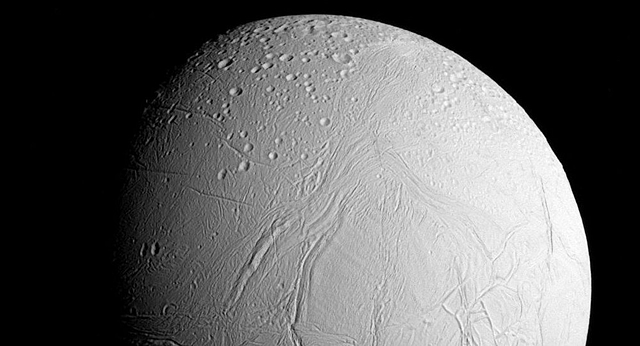
Alien Life Could Be Thriving On Saturn’s Moon Enceladus: NASA
In a first confirmation of its kind, the National Aeronautics and Space Administration (NASA) has confirmed the possibility of life inhabiting Enceladus, the watery moon of Saturn. Enceladus is a "water world," covered by oceans of liquid water trapped under a layer of ice.
NASA's Saturn probe Cassini observed a plume of water from a crack in Enceladus's ice. When Cassini sampled the plume, it found it to be 98 percent water, with the remaining 2 percent consisting of elements like liquid hydrogen, carbon dioxide and methane - and traces of organics. Those traces are all signs of the presence of life as we know it. Simple Earth organisms eat methane and excrete carbon dioxide, reports Sputnik.
"This [molecular hydrogen] is just like the icing on the cake," said Hunter Waite of the Southwest Research Institute in San Antonio, who was study lead on the Encephalus plume observation. "Now, you see the chemical energy source that microbes could use. The only thing we haven't seen is phosphorus and sulfur, and that's probably because they were in small enough quantities that we didn't see them. We have to go back and look and search for signs of life as well," read the official statement.
Based on the data, NASA believes that it's possible for simple life such as bacteria to live on the seafloor of Enceladus, adding that they will be excited with any discovery of life."
"We haven't discovered evidence of organisms on Enceladus. However, the moon of Saturn has "almost all of the ingredients that you need to support life as we know it on Earth," said NASA scientist Linda Spilker.
However, "confirmation that the chemical energy for life exists within the ocean of a small moon of Saturn is an important milestone in our search for habitable worlds beyond Earth," she said.
At 313 miles wide, Enceladus is Saturn’s sixth largest moon, It is quite small, about 15 percent as large as Earth's moon. While it may look ‘inhospitable’ like Saturn’s other moons, the observations suggest it may have the ingredients to support life.
"This distant moon now joins Mars and Europa as the best potential locations for life beyond Earth in our solar system," said Andrew Coates, a professor of physics at University College London.
With inputs from ANI